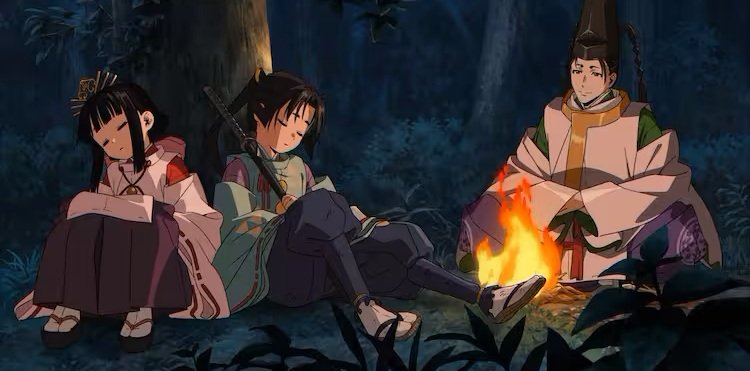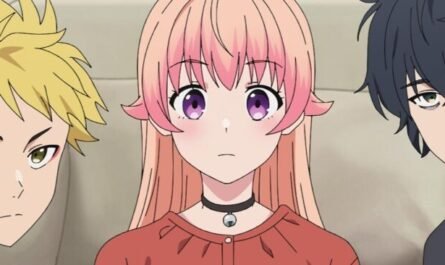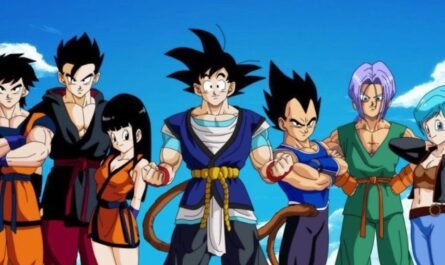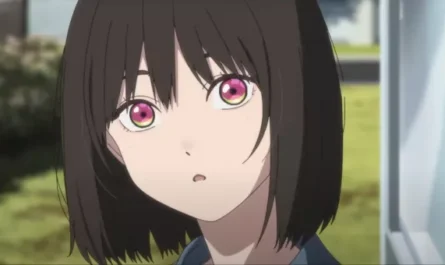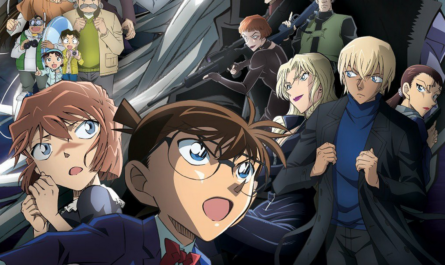The TV anime ” The Prince Who Runs Away ” (broadcast every Saturday from 11:30 to 12:00 am on TOKYO MX, ABEMA, and other networks) has become a hot topic this season. The eleventh episode has been aired, and the story is climaxing. Before the final episode, let’s reflect on what made this series stand out. (The following contains spoilers)
A protagonist who stands out from previous Jump works With the arrival of autumn summer anime are reaching their final episodes one after another. There was a rich lineup this season, but one of the most talked-about works is “The Prince Who Runs Away.” This work is based on a historical spectacle manga serialized in Weekly Shonen Jump (Shueisha) by Matsui Yusei, who is known for “Majin Tantei Nougami Neuro” and “Assassination Classroom.”
After the fall of the Kamakura Shogunate, Hojo Tokiyuki (CV: Yukawa Asaki), a surviving member of the Hojo clan, is discovered to have a talent for hiding by the mysterious Shinano Province priest Suwa Yorishige (CV: Nakamura Yuichi), and together with his companions, they set out on an adventure to recapture Kamakura. This work follows the classic Jump pattern of “friendship, effort, victory,” but what is very different from previous works is that the protagonist is a “coward.”
Although he is the legitimate successor to the Hojo clan, he continues to run away from martial arts training. While most of his family members choose to be killed in battle or commit suicide when the Shogunate falls, Tokiyuki is the only one who survives with the help of Yorkshire. In this era, fighting for pride and dying with honor when the time comes is considered a virtue. Many people may criticize Tokiyuki’s way of life as shameful, but Yorishige affirms that the quality makes him a hero.
The attitude of favoring running away may be modern, but this work does not affirm “running away” itself. Tokiyuki is a “monster of survival instinct” who gets excited and pleasure from the thrill of risking life and death. When running away from his enemies, he looks like he is enjoying a game of tag. Through the life of such a protagonist, this story praises not running away from “living” and living life to the fullest as long as you have it.
Enjoy learning about medieval Japan from the perspective of Yorishige, who can see the future. Although it is purely fiction, the basic flow follows historical facts, and it is an excellent point that it can also be used to study Japanese history. Still, it is strangely not challenging to get into, probably thanks to the existence of Suwa Yorishige.
Yorishige is a character who can control divine powers and see the future, albeit vaguely. Therefore, he makes many meta-type comments. For example, in the scene where Tokiyuki, who is facing off against Ogasawara Sadamune (CV: Aoyama Yutaka) in a dog chase, twists his body on horseback and fires an arrow while running away from the enemy, Yorishige grins and says, “It seems that in the future, he will be called by a nickname that tickles the boyish heart even more.”
The narrator then reveals that this “push twist” was a back-firing tactic used by the Middle Eastern Parthian Kingdom to defeat the Roman hordes, the world’s most powerful nation, in the BC era, and that it would later come to be called the “Parthian shot.”
In addition, in the tenth episode, Yorishige explains that as the area in which people live expands and places that are not visible to people decrease, wanted people like Tokiyuki will be caught quickly. In this scene, Tokiyuki’s image is projected on a large screen at Shibuya’s Scramble Crossing. Thanks to Yorishige’s bird’ s-eye view, we can learn about the Middle Ages and the story’s setting in a fun way while replacing it with modern Japan.
Experimental drawing direction that contrasts the story The animation of this work is handled by CloverWorks, which has worked on many hit works such as “SPY×FAMILY” and “Bocchi the Rock!”. It is worth noting that the “Wonder Egg Priority” staff, whose drawing skills were highly praised, such as director Yuta Yamazaki, character designer Yasushi Nishitani, and color designer Kazuko Nakajima, have come together.
The drawing quality in this work is so high that it can be said to be the best this season. Immediately after the first broadcast, there were rave reviews on social media, such as “The drawing quality is so amazing that I’m at a loss for words,” “To put it mildly, it’s god-level drawing!?” and “It’s simply overwhelming.”
Many works have been talked about for their high level of drawing, such as “Demon Slayer: Kimetsu no Yaiba,” which combines CG and effects to create dynamic battle scenes, and “Oshi no Ko,” which delicately expresses the characters’ feelings. Among them, the richness of the drawing and direction makes this work unique. For example, in the second episode, the burnt city of Kamakura is drawn with a touch like a sumi-e painting, and the despair and confusion of Tokiyuki walking through it stand out even more clearly.
The third episode will follow with scroll-style illustrations depicting the journey of Tokiyuki and his companions from Kamakura to Shinano Province. Even in battle scenes, the enemy’s momentum is expressed with rough brushstrokes, while Tokiyuki’s light-heartedness as he enjoys playing “tag” is shown through delicate line drawings. This work’s experimental drawing direction adds contrast and keeps viewers from getting bored.
The film also features background art that delicately depicts the landscapes of medieval Japan, a vivid yet somewhat retro color scheme, and handwritten subtitles reminiscent of period dramas, all of which show the creator’s attention to detail. The twelfth episode, “Go Tokiyuki, Until the Day Kamakura is Recaptured,” will air today, September 28th, at 11:30 pm. Text by Tomo Toriko

